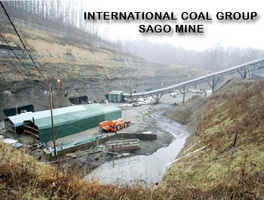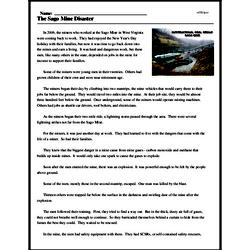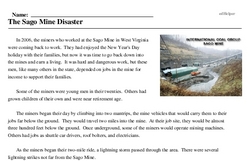The Sago Mine Disaster
In 2006, the miners who worked at the Sago Mine in West Virginia were coming back to work. They had enjoyed the New Year's Day holiday with their families, but now it was time to go back down into the mines and earn a living. It was hard and dangerous work, but these men, like many others in the state, depended on jobs in the mine for income to support their families.
Some of the miners were young men in their twenties. Others had grown children of their own and were near retirement age.
The miners began their day by climbing into two mantrips, the mine vehicles that would carry them to their jobs far below the ground. They would travel two miles into the mine. At their job site, they would be almost three hundred feet below the ground. Once underground, some of the miners would operate mining machines. Others had jobs as shuttle car drivers, roof bolters, and electricians.
As the miners began their two-mile ride, a lightning storm passed through the area. There were several lightning strikes not far from the Sago Mine.
For the miners, it was just another day at work. They had learned to live with the dangers that come with the life of a miner. So had their families.
They knew that the biggest danger in a mine came from mine gases - carbon monoxide and methane that builds up inside mines. It would only take one spark to cause the gases to explode.
Soon after the men entered the mine, there was an explosion. It was powerful enough to be felt by the people above ground.
Some of the men, mostly those in the second mantrip, escaped. One man was killed by the blast.
Thirteen others were trapped far below the surface in the darkness and swirling dust of the mine after the explosion.




